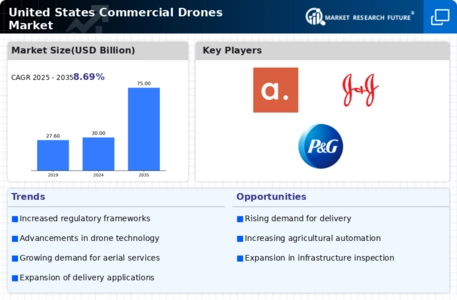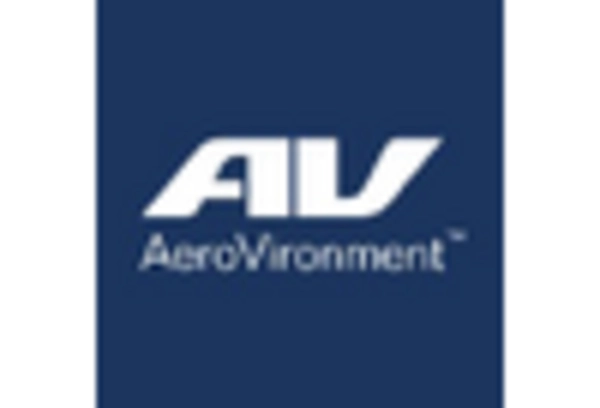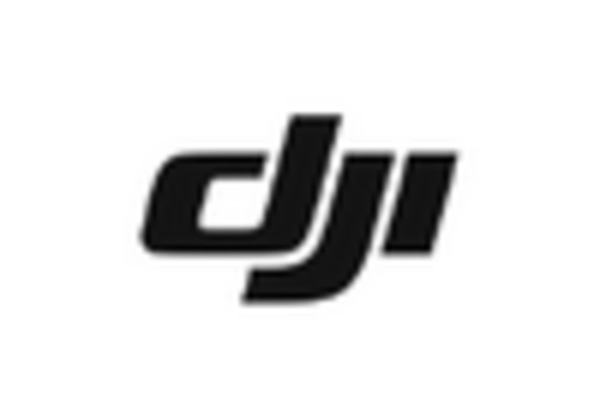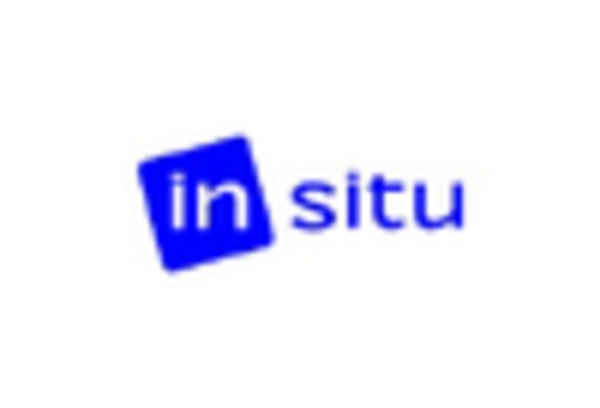Technological Advancements
Technological innovations are playing a pivotal role in shaping the United States Commercial Drones Market. The integration of advanced sensors, improved battery life, and enhanced data processing capabilities are making drones more efficient and versatile. For instance, the development of high-resolution imaging technology has opened new avenues for applications in sectors such as agriculture, construction, and surveillance. As of October 2025, the market is witnessing a trend towards the adoption of drones equipped with artificial intelligence, enabling autonomous operations and real-time data analysis. This technological evolution not only enhances operational efficiency but also reduces costs, making drones an attractive option for businesses. The continuous advancements in drone technology suggest a promising future for the United States Commercial Drones Market.
Increased Investment and Funding
Investment in the United States Commercial Drones Market is on the rise, reflecting the growing confidence in the potential of drone technology. Venture capital firms and private investors are increasingly funding startups and established companies that are innovating in the drone space. As of October 2025, the total investment in drone technology has reached several billion dollars, with a notable increase in funding directed towards research and development. This influx of capital is expected to accelerate innovation and expand the range of applications for commercial drones. The financial backing from various stakeholders suggests a strong belief in the future growth of the United States Commercial Drones Market.
Regulatory Support and Frameworks
The United States Commercial Drones Market is experiencing a surge in growth due to the establishment of supportive regulatory frameworks. The Federal Aviation Administration (FAA) has been actively working to create guidelines that facilitate the safe integration of drones into national airspace. This regulatory clarity is crucial for businesses looking to adopt drone technology. As of October 2025, the FAA has issued numerous waivers and approvals for commercial drone operations, which has encouraged investment in this sector. The potential for expanded operations, including beyond visual line of sight (BVLOS) flights, is likely to further enhance market opportunities. The regulatory environment appears to be evolving positively, which may lead to increased confidence among stakeholders in the United States Commercial Drones Market.
Growing Demand for Aerial Data Collection
The demand for aerial data collection is significantly driving the United States Commercial Drones Market. Various sectors, including agriculture, real estate, and environmental monitoring, are increasingly relying on drones for data acquisition. As of October 2025, the market is estimated to grow at a compound annual growth rate (CAGR) of approximately 15%, fueled by the need for accurate and timely data. Drones provide a cost-effective solution for capturing high-resolution images and videos, which are essential for decision-making processes. This growing reliance on aerial data is likely to propel the adoption of drones across multiple industries, indicating a robust trajectory for the United States Commercial Drones Market.
Expansion of Drone Services in Various Sectors
The expansion of drone services across various sectors is a key driver of the United States Commercial Drones Market. Industries such as logistics, construction, and emergency services are increasingly adopting drone technology to enhance operational efficiency. For example, logistics companies are utilizing drones for last-mile delivery, which is becoming a critical component of their supply chain strategies. As of October 2025, the market is witnessing a diversification of drone applications, with services ranging from aerial photography to infrastructure inspection. This broadening of service offerings is likely to attract new customers and stimulate growth within the United States Commercial Drones Market.


















Leave a Comment